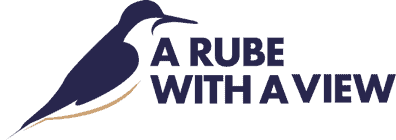My life is now 24/7 shorebird work. Last week Mandy and I moved into our headquarters house at Reeds Beach. Over the last week our team of scientists and volunteers has been gathering at our new home excited to start surveys, resightings and trapping. Although I may reflect in this blog on our daily accomplishments or failures, most of what I will report are results of our work and the conditions of the shorebird stopover and horseshoe crabs.
So far the crab spawn looks promising. The crabs came ashore in good numbers during the first week of May, more so than in previous years. A four-day northwesterly wind shut down the spawn in New Jersey, but it resumed during the last few days. The spawn will peak this week because of the spring tides associated with the new moon, so we can expect decent egg densities over the next few days at least.
The early birds seem to be arriving in fairly good condition. We have made two good catches of sanderlings, one of turnstones and one of red knots and the weights of each have been above the running average of the last 15 years. Not the best but not the worse.


 One of our major goals this year is to re-catch the birds on which we attached light-sensitive geolocators last year. These tiny devices have data loggers that record the time of sunrise and sunset and use it to calculate position, allowing us to track each bird’s movements through its yearly migration. The problem is that, in order to retrieve this data, we must re-catch the bird in order to remove the device. That’s because the devices do not transmit a signal like the satellite transmitters often used for bigger birds, such as whimbrels. Over the last year we attached more than 250 geolocators in Quebec, Massachusetts, New Jersey (both the Delaware Bay and Atlantic Coast), Florida, Texas and Argentina.
One of our major goals this year is to re-catch the birds on which we attached light-sensitive geolocators last year. These tiny devices have data loggers that record the time of sunrise and sunset and use it to calculate position, allowing us to track each bird’s movements through its yearly migration. The problem is that, in order to retrieve this data, we must re-catch the bird in order to remove the device. That’s because the devices do not transmit a signal like the satellite transmitters often used for bigger birds, such as whimbrels. Over the last year we attached more than 250 geolocators in Quebec, Massachusetts, New Jersey (both the Delaware Bay and Atlantic Coast), Florida, Texas and Argentina.
Yesterday we re-caught one of our geolocator birds, one to which we had attached the device on the Delaware Bay last year. Potentially we will know its entire year-long odyssey from Delaware Bay to the Arctic then south to its wintering area and back to the bay. We will have to wait for results once we send it to the manufacturer, the British Antarctic Survey.
Today we attempted to make another catch of knots specifically to catch one with a data logger. We set our net, and scanned the 400 knots that passed through the catch area. None had a datalogger. It was a small heartbreak to not fire our nets over what at times was a good catch of all three target species: ruddy turnstones, sanderlings and red knots. In my 20 years of catching shorebirds I have never passed up a safe catch of these three species. More importantly, neither has Clive Minton, the Aussie shorebird scientist who taught me all I know about catching shorebirds. Clive has been catching for over 50 years. Undaunted, however, we will make another attempt tomorrow to capture a red knot with an attached data logger.
